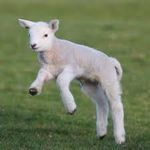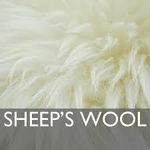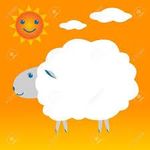The Benefits of Wool - Worshipful Company of Woolmen
←
→
Page content transcription
If your browser does not render page correctly, please read the page content below
The Benefits of Wool
'There is no substitute for Wool' This slogan was
originated by the Woolmark Company formally the
International Wool Secretariat for a London
Underground advertising campaign in the early
'1950s. The public sent in rhymes which ended in
"There is no substitute for Wool", the winner's
rhymes were then illustrated by world-famous
cartoonists of the day.
A book of this history, rhymes and illustrations
written by Past Master Richard Proctor is available
for Woolmen to order online at the Woolmen's web
site.
The Woolmen's livery is the Best of the Best
North, South, East and West
When Woolmen wear wool, we wear it with pride
It could be from Yorkshire (mills there still thrive)
Warming in winter and cooling in sun
How lucky we are - united as one
So do raise your glass and let it be full
"There is no Substitute for Wool."
Woolmen Rhyme by PM Chris Thierry
History
Sixty-five million years ago the dinosaur died out, and the mammal evolved, evolution has
provided humankind with the world's most versatile fibre. That is a long time for nature to get it
right, and it has made for us a luxury fibre that we take too quickly for
granted. An abundance of new synthetics over the years make marketing
claims on performance and comfort; these cannot come close to matching
the versatility of wool.
Wool Facts
Wool was the first fibre used by the modern human and has protected us, and provided comfort
in our clothing, bedding, carpets, rugs, and homes for thousands of years. Wool felts are still
used to form mobile collapsible homes known as Gers in Mongolia, the Russian word you may be
more familiar with is Yurts. Keratin which is the basis of wool exists in different forms horn, fingernails,
feathers, and hooves. Body hairs of other animals such as goats, camels, rabbits, and llamas are
chemically the same as wool.
Fine wools with high natural 'crimp' mainly come from merino sheep grown in the Southern
Hemisphere and dominated by Australia, which accounts for 80% of the world's supply of superfine
wools. Australia is followed by South Africa, New Zealand, Uruguay and Argentina. Merino is the top
grade of all wool varieties, with approx. One hundred crimps to the inch. The success of the merino
sheep in this hemisphere is due to the abundant sunlight, fertile soil and pollution-free ecological
environment in Oceania, this laid the natural conditions for merino wool to become the top tier material,
with softness to the touch, second only to cashmere.Straight coarser wool fibres, which are grown around the world in
the Northern Hemisphere (including British wools) are generally
more suitable for interior furnishings and carpets. In the Northern
Hemisphere where we get a lot of rain, sheep have a straighter coarser
wool fleece which enables the rain to run off. In these coarser wools, the
crimp can be a low as one or two per inch.
Merino wool fibre grows at a rate of around
0.2mm/day, and one single wool fleece will
contain over 100 million individual fibres. The modern merino sheep is a 24hr/7 day a week, 365
days a year fibre factory, producing nearly 5,500 miles of fibre/year at a rate 2/3rds of a mile an hour.
The fibres from 5 merino sheep joined end to end could tie a bow around the world.
Wools value is determined by its micron; a micron is a measurement used to describe the
diameter of wool fibre, the lower the micron measurement, the finer and softer the wool. The finest
gauge wool comes from the Merino sheep. All Merino wool is considered very fine, meaning th e
fibres are smaller than 24 microns in diameter. Today 19.5-micron (extra fine) is the most
commonly used in clothing for comfort against the skin. You also, have superfine merino wools
these are 18.5 microns or lower) and can be as fine as 11.5 microns. To enable you to envisage
how fine that is, a human hair is on average around 100 Microns wide.
Wool is non-allergenic, the facts. It is a common misconception that wool can cause an allergic reaction.
Studies show that all fibres, not only wool, can provoke a prickle sensation on the skin if the fibre end is
coarse enough. This prickle can be itchy and cause irritation, but it is not allergy. While fine fibres bend and
brush against the skin, coarse fibres tend to be more rigid and can trigger nerve endings in the skin’s
surface.
Wool is one of the most technically and chemically complex of all fibres.
The wool fibre is layered, creating an outer scale structure that is hydrophobic,
this repels water molecules; the inner layer hygroscopic and is able to transport
moisture vapour from the sheep's skin to the outside keeping it dry.
Wool provides a natural micro-climate next to the sheep's skin; stays dry to
the touch even when carrying moisture, holding up to a third of its weight in
water. Wool keeps that clammy feeling away from the body.
Copyright owner CSIRO
This ability for wool to keep you both warm and cool is best illustrated through the merino
sheep breed; Merino sheep in Australia thrive in a wide range of conditions, from -15Celsius in winter to
+45 Celsius in summer. This is due to wool's unique combination of fibre crimp and its chemical
structure. The crimp traps still air which insulates against heat and cold and the and the hygroscopic
interior transfers hot moisture vapour from the sheep's skin to the outside to keep it cool and dry. These
benefits are transferred to us when we wear wool, keeping us cool when it's hot and warm when it's cold.
An example of wools unique properties in clothing keeping you cool can be seen in the Sahara Desert,
where the Bedouins wear thin wool clothing to keep themselves cool in the blistering heat. In hot temperatures, wool
absorbs moisture from the skin and helps to dissipate heat more rapidly. This keeps the wearer cool and also reduces odour.
The Worshipful Company of Woolmen's historical connections to Australia and the Australian wool industry goes
back to its beginnings some 200 years ago. It was in the City of London in 1821 that the first bales of Australian merino
were sold at Garraway's Coffeehouse.
Wool also insulates the sheep and the wearer, holding in body heat and resisting the
penetration of cold air. In snowy climates, you may have seen sheep with a fresh layer of snow on
their backs. The reason the snow does not melt right away is that insulation of the wool fleece
blocks the loss of heat from the sheep's bodyIn the home wool's unique ability acts as a natural dehumidifier; this can be achieved through
investing in wool carpets, wool roof or wall insulation. At times of high humidity, wool absorbs the
moisture and then releases it when the atmosphere is dry, acting as an atmospheric buffer. Wool is
an extremely efficient fibre for controlling humidity in a home. An excellent example of this use is the
National Trust, who put wool insulation in lofts of some of their period properties, as well as wool
carpets, to reduce moisture build-up, which can also save on heating costs.
Wool is more durable than many of us realise; on a like for like basis is as durable as synthetics, it
also stretches and recovers and resists bending and crushing. Wools purpose is to protect the sheep,
if the wool was not resilient, it would break down quickly, and the sheep would not survive.
Each wool fibre has a three-dimensional spiralling structure that gives it natural elasticity. This elasticity means a wool fibre
can stretch up to 30% more than its original length and bounce back, wool reacts the same way when compressed, The wool
fibre is like a spring, which remembers its original form. That's why is best to choose a wool carpet and wool clothing to keep
its shape. It is naturally resilient, thereby ensuring long term appearance retention. In socks, it acts as a buffer between the
foot and ground like a shock absorber.
Wool, unlike synthetic fibres, wool is able to absorb contaminants, not only does wool keep the air in a room free of
many harmful pollutants, it will not re-emit them, even when heated. It has been estimated that a wool carpet combined with
wool interiors such as curtains and furniture can help purify the air for 30 years.
Wool's hydrophobic surface makes soiling wool products hard, however if they do get soiled, they are easy to clean.
Wool's chemical and physical structure makes it inherently flame retardant. The fibre holds flame retarding moisture and
the crimp insulates from heat. It has low flame spread, does not melt, forms an insulating cool char, self-extinguishes; it
contributes to smoke reduction and inhibits toxic gas formation.
Wool's natural crimp traps air; this provides optimal sound and thermal insulation. Wool is one of the most effective
acoustic building materials possible and dramatically reduces sound transmitted through floors and windows.
This inherent wool fibre structure in carpets will reduce injury should you fall. In the study,
published in an issue of Age and Ageing, researchers looked at the number of falls and flooring type
involved over a two-year period in 34 residential nursing homes in the U.K.A total of 6,641 falls and
222 fractures occurred during the study. Researchers found carpeted wooden floors were associated
with the lowest number of hip fractures. The risk of a hip fracture from a fall on a carpeted wood floor
was 78% lower than all other floor types.
Wool carpeting increases thermal comfort by reducing heat loss through the feet on carpets or
furniture. In tropical climates, walking barefoot on a wool carpet or sitting on wool, feels more
refreshing, less sticky and more comfortable than a synthetic one.
Wool is a natural, renewable fibre when the carpet needs to be replaced, the old carpet will biodegrade. The same for
apparel products, an example to try yourself.
Wool's natural properties help minimise the effect of dust mites; this is very important for allergy suffers who react to dust
mites. Wool does this by controlling the humidity in the carpet as dust mites like a humid atmosphere. A wool carpet also has
a natural ability to reduce static build-up and the movement of dust and noise on laminates is overcome.
In the garden wool's attributes as a mulch, to prevent the soil drying out and also as slug pellets. In both cases as they bio-
degrade they release valuable nutrients into the soil. As an experiment to test this - in the Autumn lift some turf from the lawn,
place an old sweater on the soil, replace the turf on top of the sweater, wait until next spring. As the wool biodegrades, the
grass will grow greener, and taller, taking on the shape of the sweater.Sleep well with wool. The human body consists of up to 75% water, and 500ml of water is lost each day through the
respiratory system and perspiration, a considerable amount of this moisture is lost during sleep.
Sleep is dynamic and changing – it is very structured and controlled by the central nervous system
• Stage 1 – A transition stage from waking to sleep
• Stage 2 – A person is sound asleep but can easily be awakened by noises
• Stage 3 – almost totally relaxed
• Stage 4 – this is the deepest level of sleep with muscles completely relaxed REM Sleep
Sleeping materials are essential as wool helps control body temperature, the heart rate slows, less
limb exposure, calmer rest, REM sleep can increase by 25%
Within the room, the microclimate created by the human body and its interaction with individual bedding items has a strong
relationship with, temperature and humidity conditions. An ideal room comfort range seems to be between 18ºC – 20ºC (64ºF
– 68ºF) Lower than 16ºC (60ºF) people attempt to sleep more, above 21ºC (70ºF) people may not sleep long enough to be
rested.
Wool is used in hospitals to control the body temperature of premature babies, and for patients
with long periods in bed. Fleece disperses pressure spots exceptionally well and eliminates moisture
build-up and reduces the chance of bedsores and helps babies gain weight more rapidly.
Wool, a naturally environment friendly fibre; live with wool and reduce your carbon footprint, as wool
is an ideal fibre to help reduce global warming. According to international research, a household can
significantly reduce its carbon emissions by living with wool: insulating with wool, wearing wool, walking, sleeping and sitting
on wool. The European Commission reports that a household can cut its CO2 emissions by up to 300kg a year and energy bill
by 5-10 per cent simply by reducing its heating by a mere 1°C. Extract from a media release by AWI in 2009.
Wool is not anti-bacterial, however it appears to be so, because it does not smell when worn next to skin. This is because it is
absorbing the mal-odours rather than killing the bacteria responsible for the mal-odours and therefore requires less regular
cleaning than for example, cotton. A further opportunity of carbon footprint reduction.
Wool is a planet-friendly fibre made from the simple combination of sunlight,
water, and grass. It is made of up to 50 per cent carbon, stored in a stable form. It
is renewable, has the ability to biodegrade without harm to the environment and can
be recycled. Providing both advanced and developing countries alike the
opportunity to reduce their reliance on fossil fuels.
A note on guilds and livery companies engaged with wool; many of the 12th Century City Livery
Companies were involved with wool. Some specialised in particular wool manufacturing processes such as
Weaving, Dyeing or Clothworking. These are recognised as ‘Craft’ Livery Companies. Some Company roots
such as the Drapers’ and the Woolmen were more involved in the setting of standards, the buying, collection
and selling of wool products. These are described as ‘Merchant’ Companies. The Woolmen’s varied history
defines it as predominantly a ‘Merchant’ rather than a ‘Craft’ Company. The Woolmen is unique in being the
only Textile related Livery Company whose title is defined as a single fibre - Wool. Many early Woolmen lived
outside London.You can also read


























































